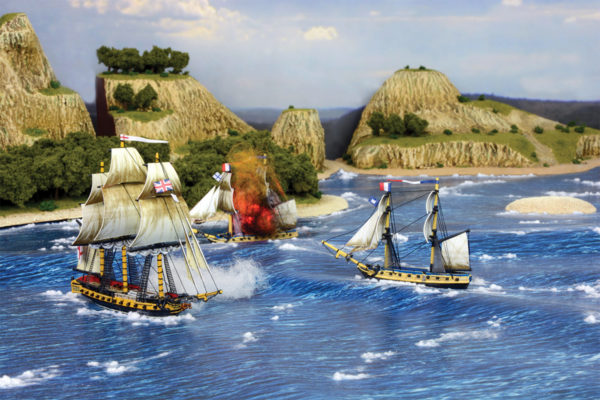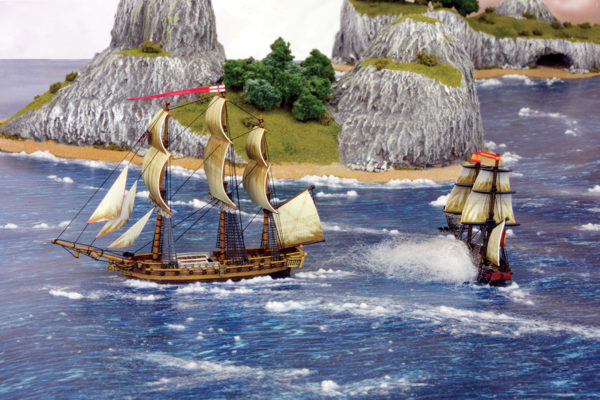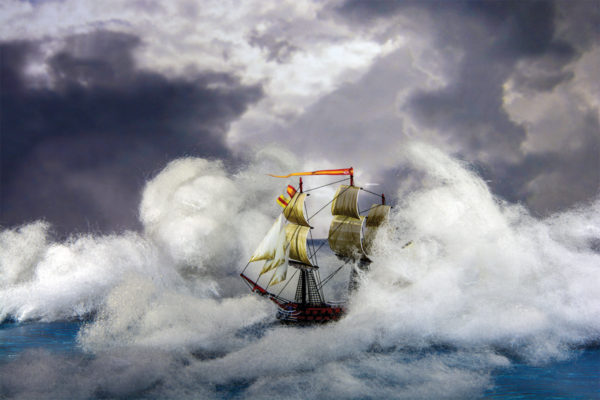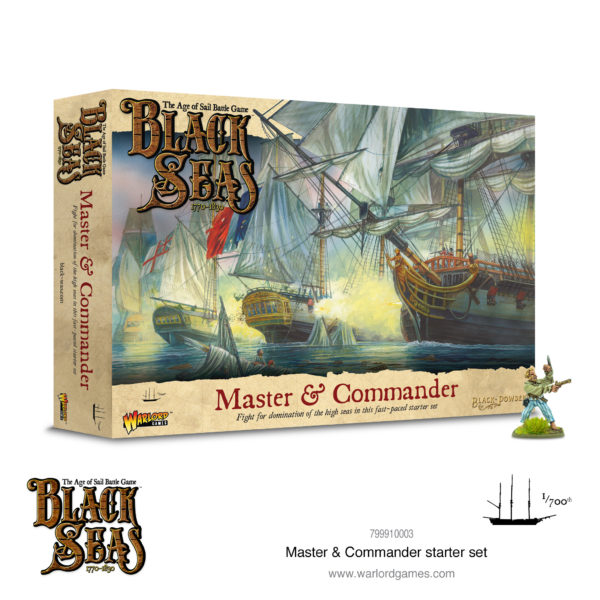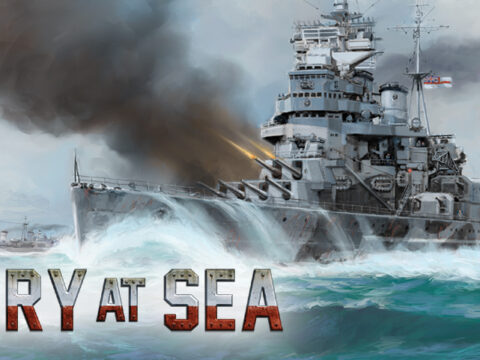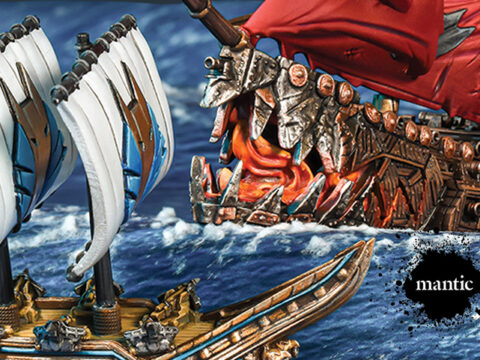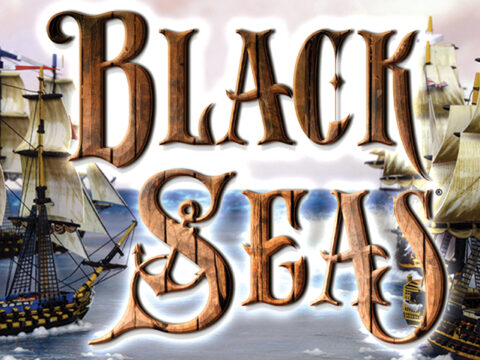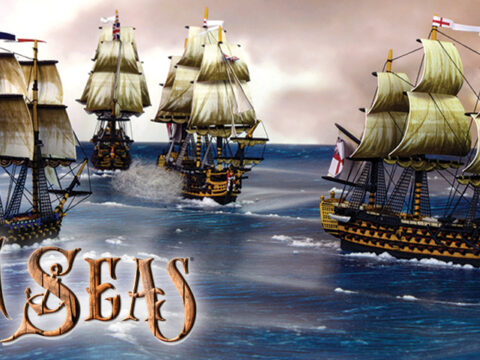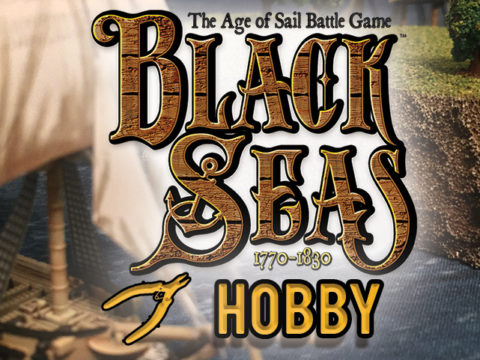Ships acquired a colourful history over the course of their life – this week, we’re taking a look at the career of one humble frigate – HMS Emerald!
HMS Emerald & the Amazons
During the 1790s, the Royal Navy ordered four Amazon-class frigates, of which HMS Emerald was one. The Amazon-class frigates were commissioned to close the gap between the Royal Navy and its French and Spanish counterparts – during the wars of the preceding 20 years, Britain’s enemies had focussed on churning out big, over-gunned frigates, leaving the Royal Navy at a significant disadvantage.
The Amazon-class frigates were a powerful addition to the Royal Navy’s arsenal – allowing them to contest the French and Spanish dominance across the globe. Frigates were perfect for convoy escort, raiding and blockade work, while also supporting ships-of-the-line in fleet engagements.
HMS Emerald was a 36-gun frigate, principally armed with 26 long 18-pounders. Supplementing this powerful broadside was 8 32-pound carronades and 8 long 9-pounders on her top deck. A dozen swivel guns were mounted on the foredeck, quarterdeck and fighting tops. She had a full complement of 264 officers, seamen, boys, and marines. The bill for her construction and outfitting totaled £23,809 – almost two million pounds in modern money.
She was captained by Velters Cornewall Berkeley – a veteran of the American War of Independence who had cut his teeth commanding the 44-gun two-decker HMS Assurance in the Caribbean and Meditteranean.
Commissioned into the Channel Fleet, HMS Emerald joined up with Admiral Jervis’ fleet in 1796, cruising the Meditteranean before heading to Lagos, where it saw action in the battle off Cape St Vincent.
Cape St Vincent & the Hunt for the Santisima Trinidad
The situation in the Mediterranean was deteriorating rapidly – the Spanish had changed sides and were out for blood. Led by the most powerful warship in the world – the 140-gun Santisima Trinidad – the Cadiz fleet had sailed!
Captain Berkeley and HMS Emerald were waiting in the Bay of Lagos when Admiral Jervis returned. He had met the Spanish in battle and put them to flight, despite being outnumbered and outgunned. Jervis’ fifteen ships, including HMS Victory had smashed a Spanish fleet of 27 ships, crippling the monolithic Santisima Trinidad in the process.
Despite the mauling it had taken during the battle, the Santisima Trinidad had escaped. Unwilling to let such a valuable prize escape, Jervis dispatched a squadron consisting of HMS Emerald, a 36-gun frigate HMS Minerve, a 32-gun frigate HMS Niger, the 20-gun brig HMS Bonne Citoyenne and the carronade-armed 18-gun sloop HMS Raven to track down the Spanish giant and capture her.
When Berkeley encountered the Santisima Trinidad, she was limping for home with only her mainsail flying and a jury-rigged mizzen mast, under the tow of a friendly frigate. Additional sightings were made of a Spanish brig shadowing the wounded first rate.
Berkeley’s squadron shadowed the first-rate for the best part of a day, eventually losing her as darkness closed in. He faced strong criticism for not engaging the Santisima, but she was still the most powerful ship in the world and was (even in her severely damaged condition) reducing Berkeley’s squadron to matchwood.
Take to the Black Seas!
Begin your seafaring adventures with the Black Seas starter set. You’ll receive a selection of brigs and frigates; giving you the makings of a fine fleet. Get your pre-order in before midnight (G.M.T) on Saturday 7th September and you’ll get a free sinking 3rd Rate Ship of the Line!


